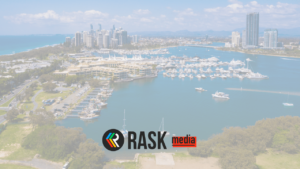After infrastructure was hammered last month, falling more than the overall sharemarket and most other assets, its position in portfolios as a defensive asset class is now in question.
The S&P Global Infrastructure Index (AUD) (DJBGIA) fell 23% in March and 28% so far this year.
Another notable infrastructure benchmark, the Morningstar Global Infrastructure Index (AUD), fell 19.3% last month and has fallen 15.9% so far this year.
Meanwhile, the Australian share market index, the S&P/ASX 200 Total Return Index (ASX: XNT) fell 20.6% last month and 23.1% so far this year.
The Head of Infrastructure at Magellan Financial Group (ASX: MFG), Gerald Stack, says: “We believe infrastructure remains a diversifier for an investment portfolio, notwithstanding that in the face of pandemic the investment option has been highly correlated to the broader equities market.
“Notwithstanding the performance through this crisis, we believe that the investment returns from infrastructure typically reflect different underlying drivers to broader equity markets. This will ultimately mean infrastructure diversifies an investment portfolio.” – Stack
The Magellan Infrastructure Fund is a global stock portfolio made up of 45% utility companies, 40% infrastructure, such as toll roads and airports, and 15% cash. The fund was down 18.9% over the three months to the end of March 2020.
Stack says that within the sector there have been some big disparities. Airport stocks fell more than 40% during the March quarter, toll roads lost around 25% and energy infrastructure was down 12%. Communications infrastructure rose 4%.
“The problem for airports, toll roads and rail segments is that they face significant short-term declines in patronage. With airports and toll roads, we expect a significant drop in passenger movements and car trips but we assess that our companies have sufficient cash flow and liquidity to cope.
“If you take the 41% drop for airport operators for the March quarter, we estimate that investors are pricing in something like a six-month interruption in passenger numbers, followed by a slow recovery. If the interruption is shorter then airport stocks could claw back some of their losses.”
Stack says demand patterns for transport infrastructure have historically been consistent and predictable but current circumstances are extraordinary.
“We have reviewed the balance sheets and forecast cash flows for the companies in our portfolio. Our companies are generally in strong positions in terms of solvency for at least the next six months,” he says.
RARE Infrastructure co-founder and senior portfolio manager, Nick Langley, says: “Since the current selldown began in February, regulated sectors, such as electric and water utilities, have help up well compared with equities. However, the impact of the shutdown on transport assets such as airports and toll roads has affected these companies sharply.”
RARE’s most defensive portfolio is its Infrastructure Income Fund, which has a bias to utility sectors. Electric, gas and water utilities make up 85% of the holdings in the portfolio.
Langley says earnings are linked to the underlying asset base, rather than the economic cycle. “So, while stock prices of these companies may be affected by board market sell-offs, their resilient earnings and cash flow profile gives us confidence that the stock price will bounce back once fundamentals become the key driver again.”
The Infrastructure Income Fund fell 4.1% in February. The S&P Global Infrastructure Index was down 9% over the same period.
This article was written by Annabelle Dickson, senior journalist for The Inside Adviser.
[ls_content_block id=”18457″ para=”paragraphs”]




